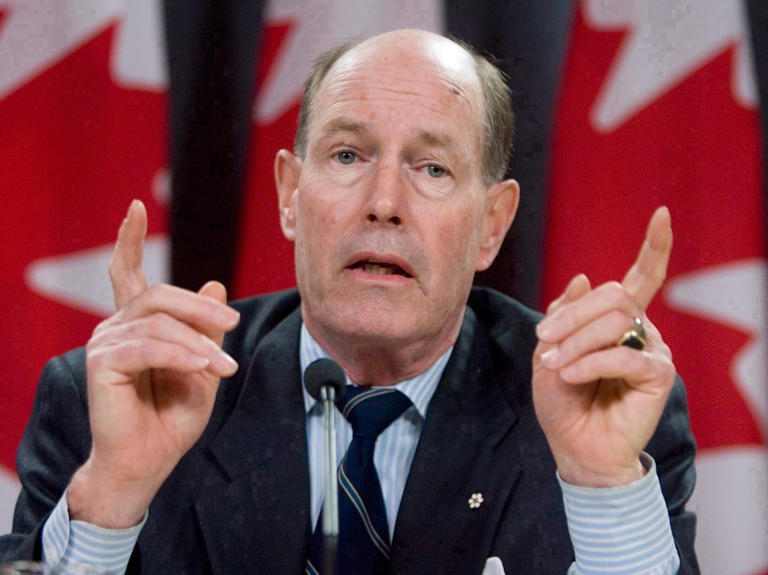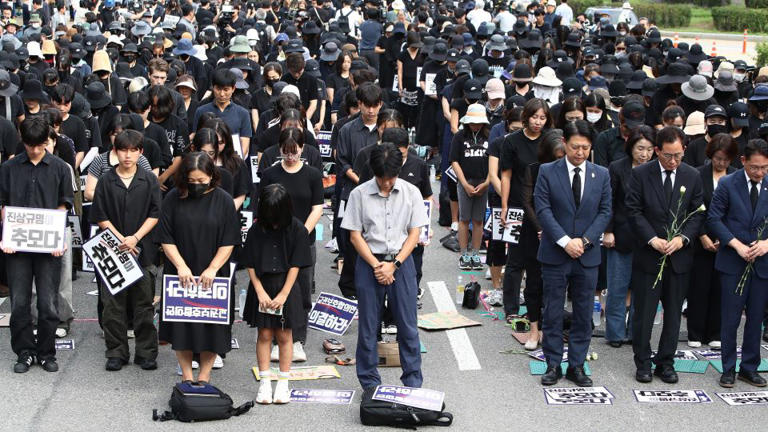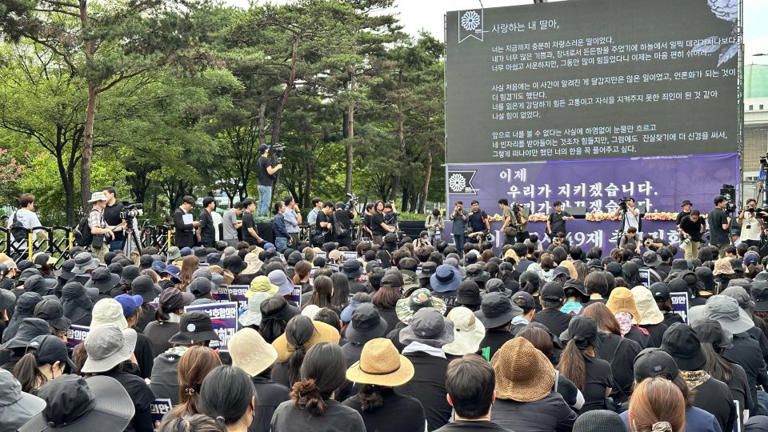French schools refuse dozens of girls wearing Muslim robe
Story by AFP

Dozens refused do remove the abaya in defiance of a ban on the dress in schools© LOIC VENANCE
French schools sent dozens of girls home for refusing to remove their abayas -- an over-garment from the shoulders to the feet worn by Muslim women -- on the first day of the school year, a government minister said Tuesday.

Unlike headscarves, abayas occupied a grey area and had faced no outright ban until now© LOIC VENANCE
Defying a ban on the Muslim robe, nearly 300 girls showed up Monday morning wearing an abaya, Gabriel Attal told the BFM broadcaster.
Most agreed to change out of the robe, but 67 refused and were sent home, he said.
The government announced last month it was banning the abaya in schools, saying it broke the rules on secularism in education that have already seen Muslim headscarves banned on the grounds they constitute a display of religious affiliation.

An association representing Muslims has filed a motion with the State Council, France's highest court for complaints against state authorities© Denis Charlet
The move gladdened the political right but the hard-left argued it represented an affront to civil liberties.
Attal said the girls refused entry were given a letter addressed to their families saying that "secularism is not a constraint, it is a liberty".
If they showed up at school again wearing the abaya there would be a "new dialogue", the minister said.
Late Monday, President Emmanuel Macron defended the controversial measure, saying there was a "minority" in France who "hijack a religion and challenge the republic and secularism", leading to the "worst consequences".
He cited the murder three years ago of teacher Samuel Paty for showing caricatures of the prophet Mohammed during a civics education class.
"We cannot act as if the terrorist attack, the murder of Samuel Paty, had not happened," he said in an interview with You Tube channel HugoDecrypte.
- 'Elevated risk of discrimination' -
An association representing Muslims has filed a motion with the State Council, France's highest court for complaints against state authorities, for an injunction against the ban on the abaya and the qamis, its equivalent dress for men.
The Action for the Rights of Muslims (ADM) motion was being examined Tuesday.
France's Council of the Muslim Faith (CFCM), established to represent Muslims before the government, warned that the banning of the abaya could create "an elevated risk of discrimination" and said it was considering putting its own complaint before the State Council.
The absence of "a clear definition of this garment creates a vague situation and legal uncertainty," it said.
It expressed fear over "arbitrary" controls and that the criteria for evaluating young girls' dress could be based on "the supposed origin, last name or skin colour" rather than what they wore.
A law introduced in March 2004 banned "the wearing of signs or outfits by which students ostensibly show a religious affiliation" in schools.
This includes large Christian crosses, Jewish kippas and Muslim headscarves.
Unlike headscarves, abayas occupied a grey area and had faced no outright ban until now.
The issue has been a dominant theme of French politics after the summer holidays, with the hard-left has accusing the government of trying with the abaya ban to compete with Marine Le Pen's far-right National Rally and shifting further to the right.
The announcement late last month of the ban was the first major move by Attal, 34, since he was promoted this summer to handle the hugely contentious education portfolio.
Along with Interior Minister Gerald Darmanin, 40, he is seen as a rising star who could potentially play an important role after Macron steps down in 2027.
mep-jh-sjw/rox
Story by AFP

Dozens refused do remove the abaya in defiance of a ban on the dress in schools© LOIC VENANCE
French schools sent dozens of girls home for refusing to remove their abayas -- an over-garment from the shoulders to the feet worn by Muslim women -- on the first day of the school year, a government minister said Tuesday.

Unlike headscarves, abayas occupied a grey area and had faced no outright ban until now© LOIC VENANCE
Defying a ban on the Muslim robe, nearly 300 girls showed up Monday morning wearing an abaya, Gabriel Attal told the BFM broadcaster.
Most agreed to change out of the robe, but 67 refused and were sent home, he said.
The government announced last month it was banning the abaya in schools, saying it broke the rules on secularism in education that have already seen Muslim headscarves banned on the grounds they constitute a display of religious affiliation.

An association representing Muslims has filed a motion with the State Council, France's highest court for complaints against state authorities© Denis Charlet
The move gladdened the political right but the hard-left argued it represented an affront to civil liberties.
Attal said the girls refused entry were given a letter addressed to their families saying that "secularism is not a constraint, it is a liberty".
If they showed up at school again wearing the abaya there would be a "new dialogue", the minister said.
Late Monday, President Emmanuel Macron defended the controversial measure, saying there was a "minority" in France who "hijack a religion and challenge the republic and secularism", leading to the "worst consequences".
He cited the murder three years ago of teacher Samuel Paty for showing caricatures of the prophet Mohammed during a civics education class.
"We cannot act as if the terrorist attack, the murder of Samuel Paty, had not happened," he said in an interview with You Tube channel HugoDecrypte.
- 'Elevated risk of discrimination' -
An association representing Muslims has filed a motion with the State Council, France's highest court for complaints against state authorities, for an injunction against the ban on the abaya and the qamis, its equivalent dress for men.
The Action for the Rights of Muslims (ADM) motion was being examined Tuesday.
France's Council of the Muslim Faith (CFCM), established to represent Muslims before the government, warned that the banning of the abaya could create "an elevated risk of discrimination" and said it was considering putting its own complaint before the State Council.
The absence of "a clear definition of this garment creates a vague situation and legal uncertainty," it said.
It expressed fear over "arbitrary" controls and that the criteria for evaluating young girls' dress could be based on "the supposed origin, last name or skin colour" rather than what they wore.
A law introduced in March 2004 banned "the wearing of signs or outfits by which students ostensibly show a religious affiliation" in schools.
This includes large Christian crosses, Jewish kippas and Muslim headscarves.
Unlike headscarves, abayas occupied a grey area and had faced no outright ban until now.
The issue has been a dominant theme of French politics after the summer holidays, with the hard-left has accusing the government of trying with the abaya ban to compete with Marine Le Pen's far-right National Rally and shifting further to the right.
The announcement late last month of the ban was the first major move by Attal, 34, since he was promoted this summer to handle the hugely contentious education portfolio.
Along with Interior Minister Gerald Darmanin, 40, he is seen as a rising star who could potentially play an important role after Macron steps down in 2027.
mep-jh-sjw/rox











